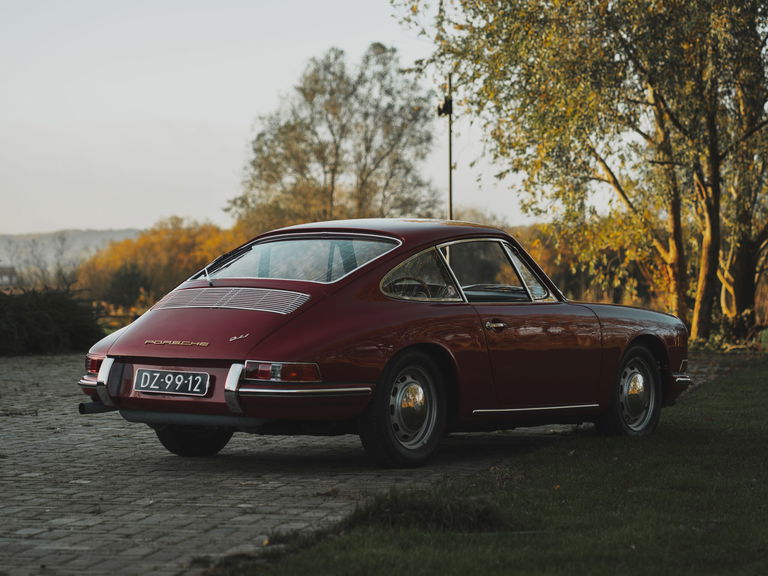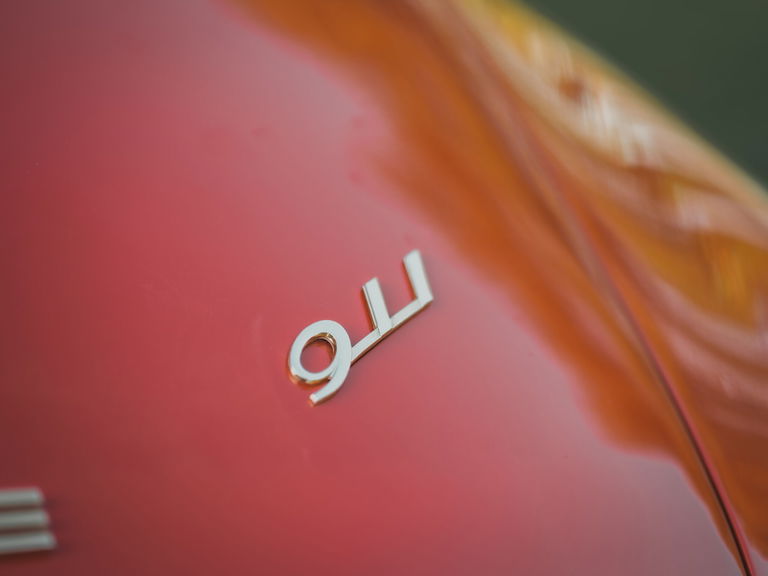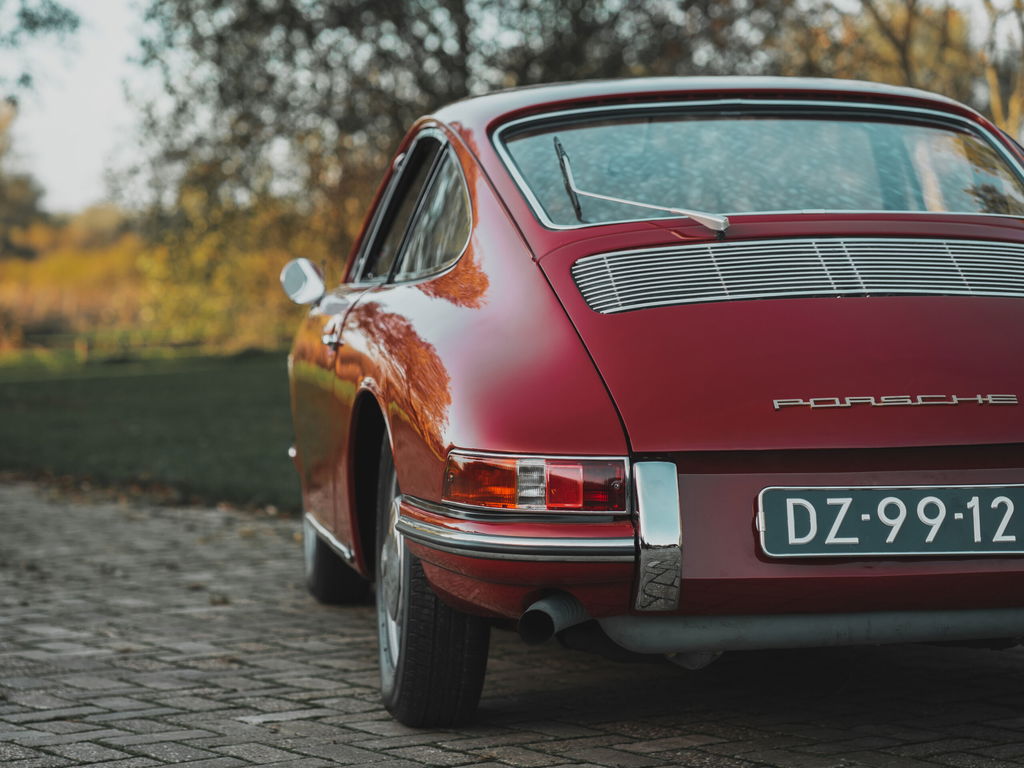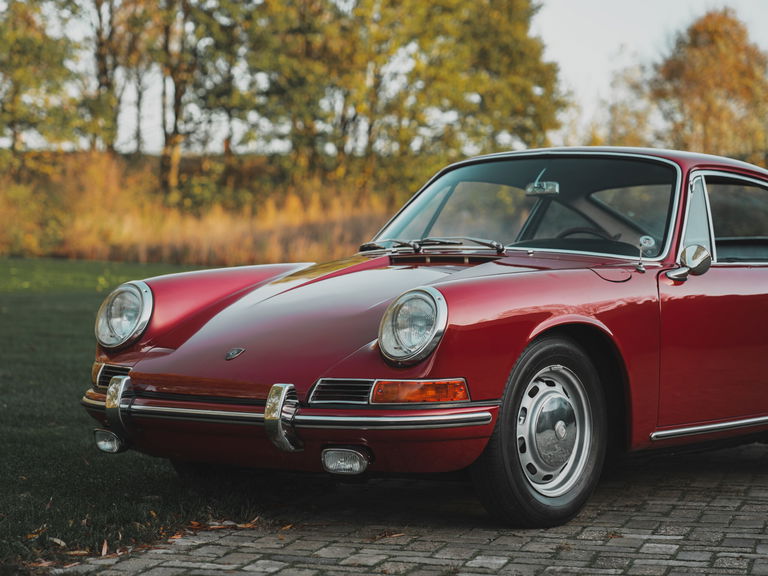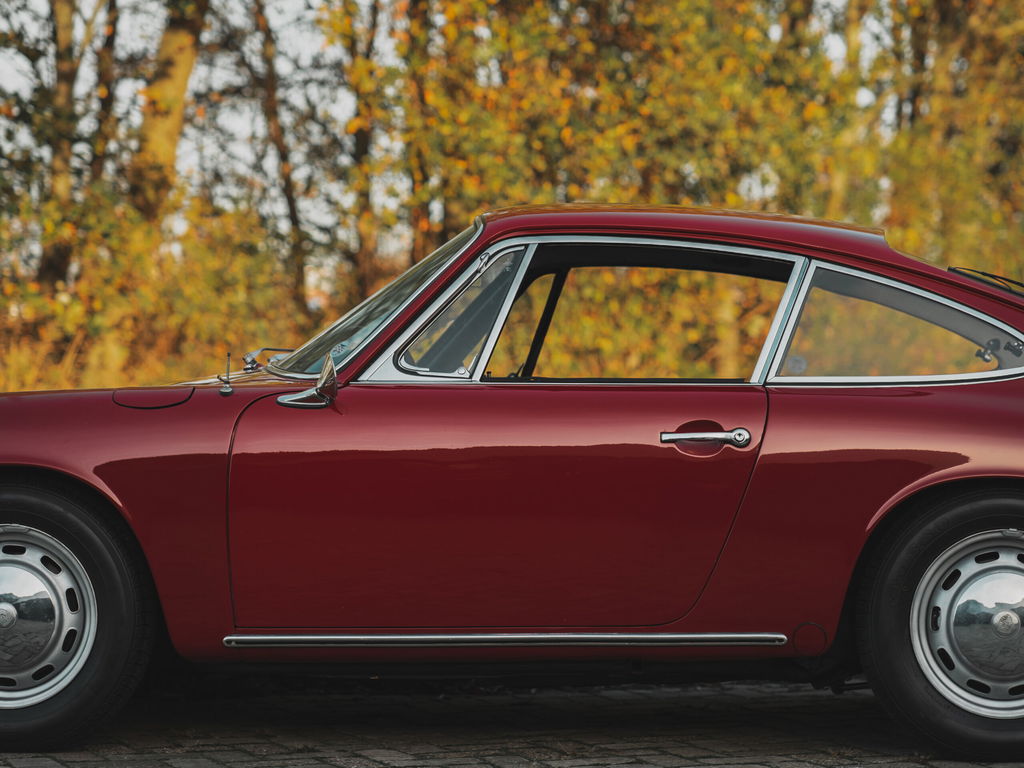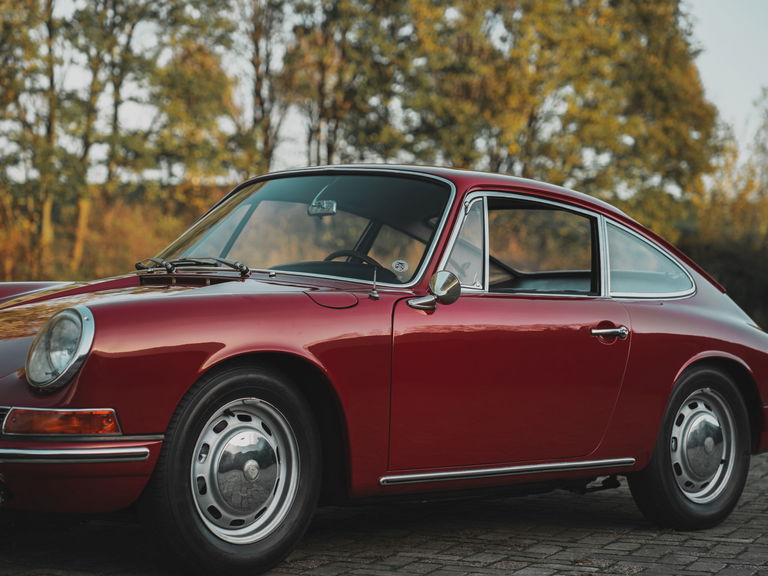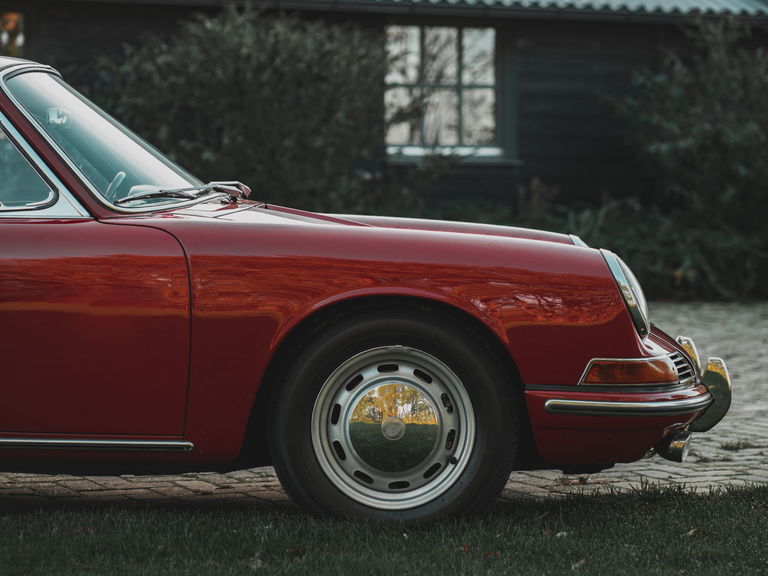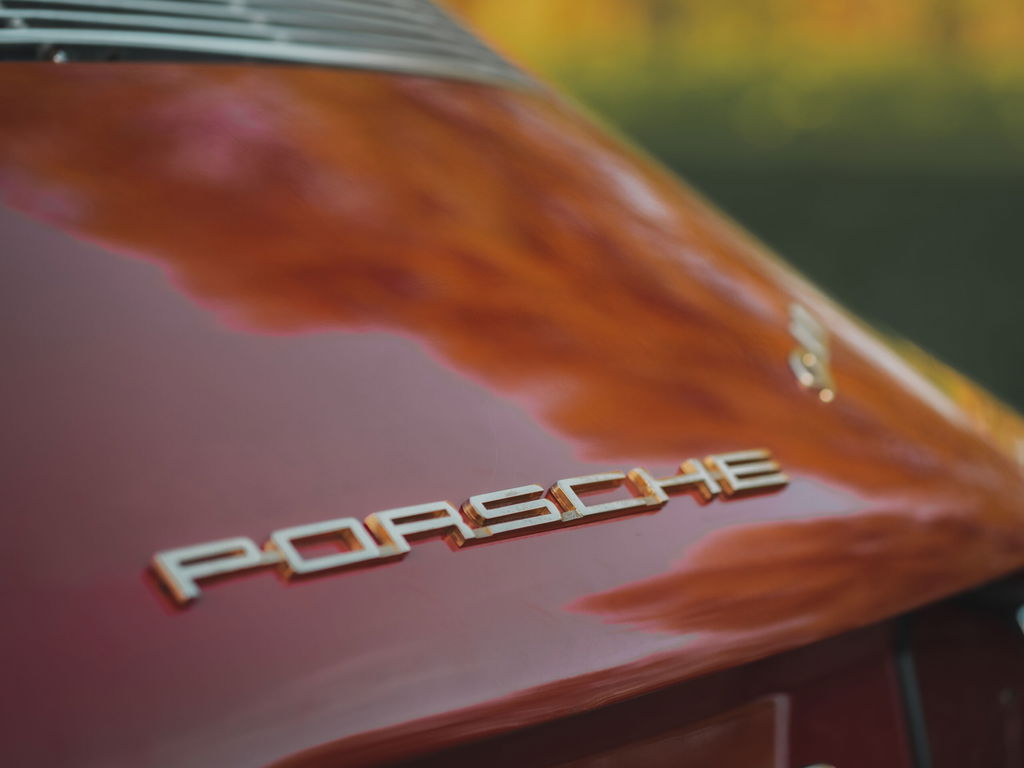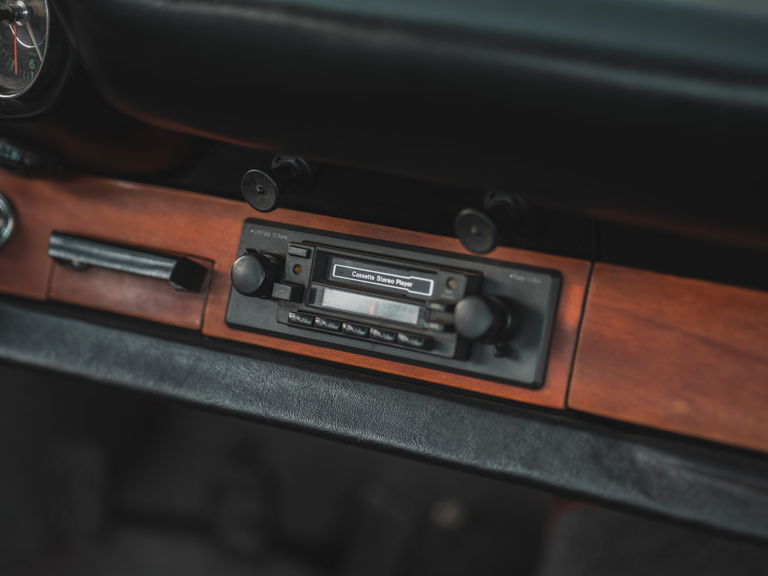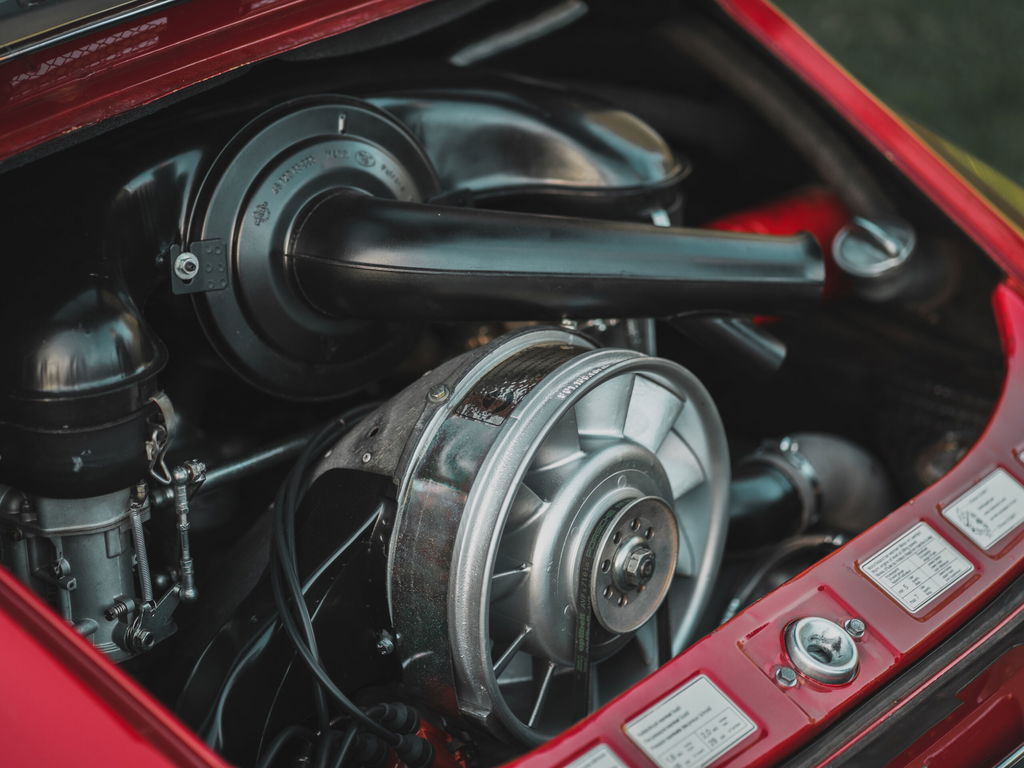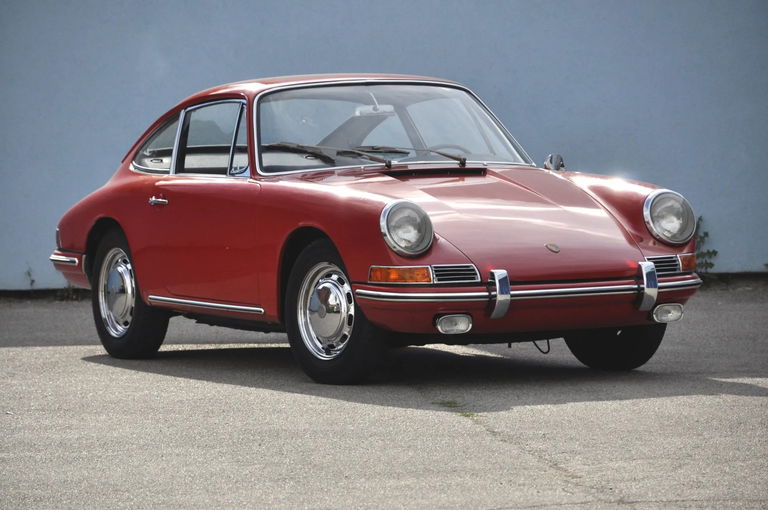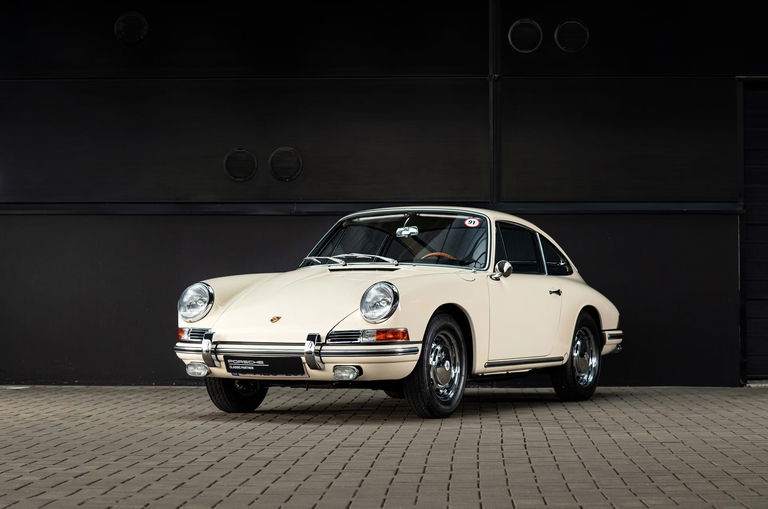Der Porsche 911 aus dem Jahr 1965 nimmt in der Automobilgeschichte einen besonderen Platz ein, denn er war das Debüt des Modells, das die Marke Porsche über Jahrzehnte hinweg prägen sollte. Der auf der Frankfurter Automobilausstellung 1963 vorgestellte Porsche 911 (ursprünglich "Porsche 901" genannt) wurde 1964 der Öffentlichkeit zugänglich gemacht. Ab 1965 begann der 911, sich auf dem Markt durchzusetzen und etablierte sich als leistungsorientierter und zugleich eleganter Sportwagen.
Karosseriestil: Der Porsche 911 von 1965 behielt die klassische, schlanke und elegante Silhouette bei, die zum Markenzeichen geworden ist. Das Design umfasste eine lange Motorhaube, ein kurzes Heck und einen hinten platzierten Motor. Die Karosserie bestand ursprünglich aus Stahl mit einigen Aluminiumkomponenten und wies ein charakteristisches Design mit runden Scheinwerfern auf.
Das Fahrgestell: Das Fahrgestell des 911 basierte auf einer Unibody-Konstruktion (im Gegensatz zu einer getrennten Rahmen- und Karosseriekonstruktion), was zu seinem geringen Gewicht und seiner hohen Steifigkeit beitrug. Dies verlieh dem Wagen ein für seine Zeit bemerkenswertes Fahrverhalten und eine hohe Fahrdynamik.
Die Aufhängung: Der 911 von 1965 verfügte über eine Einzelradaufhängung mit Torsionsstäben an der Vorderachse und eine Pendelachse mit Längslenkern an der Hinterachse. Diese Aufhängung war zwar nicht so ausgeklügelt wie spätere Systeme, trug aber zu den flinken und reaktionsschnellen Fahreigenschaften des Wagens bei.
Das Getriebe: Der Wagen war mit einem 4-Gang-Schaltgetriebe ausgestattet, das präzise und angenehm zu bedienen war. Das Getriebe des 911 wurde durch seine sanften Schaltvorgänge und sein direktes Schaltgefühl zu einem der charakteristischen Merkmale des Wagens.
Innenraum: Im Innenraum des 911 von 1965 wurde ein minimalistisches, aber auf den Fahrer ausgerichtetes Design beibehalten. Das Armaturenbrett war einfach gehalten, mit einem zentralen Tachometer und Drehzahlmesser, während die Sitze in der Regel mit Leder oder Vinyl bezogen waren. Der Innenraum war funktional und dennoch luxuriös und spiegelte Porsches Fokus auf Leistung wider, ohne dabei auf Komfort zu verzichten.
Entwicklung des Designs: Eine wichtige Neuerung im Jahr 1965 war die Einführung des Namens "911", der die ursprüngliche Bezeichnung "901" ersetzte, nachdem Peugeot die Rechte an Namen mit einer Null in der Mitte beansprucht hatte. Die Modelle von 1965 brachten auch einige Änderungen mit sich, wie z. B. breitere Radkästen, um größere Reifen unterzubringen, und die Einführung der ausgestellten hinteren Radkästen aus Stahl bei den Fahrzeugen der 911er-Reihe.
Sicherheit und Innovationen: Der 911 von 1965 war zwar nicht so sicherheitsorientiert wie moderne Autos, aber er verfügte über Sicherheitsmerkmale wie das Zweikreis-Bremssystem, das im Falle eines Ausfalls einen zweiten Bremskreis zur Verfügung stellte. Dies war eine erhebliche Verbesserung gegenüber früheren Systemen.
Der Preis: Als der Porsche 911 1965 auf den Markt kam, lag der Grundpreis bei etwa 6.500 Dollar, was für einen Sportwagen zu jener Zeit recht teuer war.
Kulturelle Bedeutung
Der Porsche 911 von 1965 wurde zum Synonym für Fahrleistungen und ist seitdem ein Symbol für deutsche Ingenieurskunst. Im Laufe der Jahre etablierte er sich als eines der erfolgreichsten und beständigsten Sportwagendesigns der Automobilgeschichte. Die unverwechselbare Form des Modells, sein dynamisches Fahrverhalten und sein Ruf als zuverlässiger und leistungsstarker Sportwagen ebneten den Weg für den 911 zu einer weltweiten Ikone.
Zusätzliche Dienstleistungen:
Transport: Wir organisieren für Sie den Transport, sowohl offen als auch geschlossen.
Ausfuhr: Wir bieten volle Exportunterstützung, wenn Sie das Auto exportieren möchten
Classics-World Erlecom (5 Minuten von Nijmegen entfernt)
Adresse: Erlecomsedam 84, 6577JE, Erlecom
Spezialisiert auf Porsches, Jaguars, Mercedes, Austin Healeys
Bitte rufen Sie vorher an, da wir zwei Standorte haben, danke.







